Front Cover
Half Title
Author Biography
Title Page
Copyright
Dedication
Contents
List of Figures
List of Tables
Preface
1 The Standard Discrete System and Origins of the Finite Element Method
1.1 Introduction
1.2 The structural element and the structural system
1.3 Assembly and analysis of a structure
1.4 The boundary conditions
1.5 Electrical and fluid networks
1.6 The general pattern
1.7 The standard discrete system
1.8 Transformation of coordinates
1.9 Problems
References
2 Problems in Linear Elasticity and Fields
2.1 Introduction
2.2 Elasticity equations
2.2.1 Displacement function
2.2.2 Strain matrix
2.2.2.1 Strain-displacement matrix
2.2.2.2 Volume change and deviatoric strain
2.2.3 Stress matrix
2.2.3.1 Mean stress and deviatoric stress
2.2.4 Equilibrium equations
2.2.4.1 Plane stress and plane strain problems
2.2.4.2 Axisymmetric problems
2.2.5 Boundary conditions
2.2.5.1 Boundary conditions on inclined coordinates
2.2.5.2 Normal pressure loading
2.2.5.3 Symmetry and repeatability
2.2.6 Initial conditions
2.2.7 Transformation of stress and strain
2.2.7.1 Energy
2.2.8 Stress-strain relations: Elasticity matrix
2.2.8.1 Isotropic materials
2.2.8.2 Deviatoric and pressure-volume relations
2.2.8.3 Anisotropic materials
2.2.8.4 Initial strain—thermal effects
2.3 General quasi-harmonic equation
2.3.1 Governing equations: Flux and continuity
2.3.2 Boundary conditions
2.3.3 Initial condition
2.3.4 Constitutive behavior
2.3.5 Irreducible form in φ
2.3.6 Anisotropic and isotropic forms for k: Transformations
2.3.7 Two-dimensional problems
2.4 Concluding remarks
2.5 Problems
References
3 Weak Forms and Finite Element Approximation: 1-D Problems
3.1 Weak forms
3.2 One-dimensional form of elasticity
3.2.1 Weak form of equilibrium equation
3.2.1.1 Adjoint forms
3.3 Approximation to integral and weak forms: The weighted residual (Galerkin) method
3.3.1 Galerkin solution of elasticity equation
3.4 Finite element solution
3.4.1 Requirements for finite element approximations
3.5 Isoparametric form
3.5.1 Higher order elements: Lagrange interpolation
3.5.1.1 Linear shape functions
3.5.1.2 Quadratic shape functions
3.5.2 Integrals on the parent element: Numerical integration
3.6 Hierarchical interpolation
3.7 Axisymmetric one-dimensional problem
3.7.1 Weak form for axisymmetric problem
3.7.2 A variational notation
3.7.3 Irreducible form for axisymmetric problem
3.7.4 Finite element solution
3.8 Transient problems
3.8.1 Discrete time methods
3.8.1.1 Stability and dissipation
3.8.2 Semi-discretization of the problem
3.8.2.1 Stability of modes
3.9 Weak form for one-dimensional quasi-harmonic equation
3.9.1 Weak form
3.9.2 Finite element solution of quasi-harmonic problem
3.9.3 Transient problems
3.9.3.1 Stability
3.10 Concluding remarks
3.11 Problems
References
4 Variational Forms and Finite Element Approximation: 1-D Problems
4.1 Variational principles
4.2 “Natural” variational principles and their relation to governing differential equations
4.2.1 Euler equations
4.3 Establishment of natural variational principles for linear, self-adjoint differential equations
4.4 Maximum, minimum, or a saddle point?
4.5 Constrained variational principles
4.5.1 Lagrange multipliers
4.5.2 Identification of Lagrange multipliers: Forced boundary conditions and modified variational principles
4.6 Constrained variational principles: Penalty function and perturbed Lagrangian methods
4.6.1 Penalty functions
4.6.2 Perturbed Lagrangian
4.7 Least squares approximations
4.8 Concluding remarks: Finite difference and boundary methods
4.9 Problems
References
5 Field Problems: A Multidimensional Finite Element Method
5.1 Field problems: Quasi-harmonic equation
5.1.1 Irreducible form
5.1.2 Finite element discretization
5.1.2.1 Two-dimensional plane and axisymmetric problem
5.1.2.2 Element matrices
5.1.3 Shape functions for triangle, rectangle, and tetrahedron
5.1.3.1 Triangle with three nodes
5.1.3.2 Rectangle with four nodes
5.1.3.3 Tetrahedron with four nodes
5.2 Partial Discretization: Transient Problems
5.3 Numerical examples: An assessment of accuracy
5.3.1 Torsion of prismatic bars
5.3.1.1 Torsion of rectangular shaft
5.3.1.2 Torsion of hollow bimetallic shaft
5.3.2 Transient heat conduction
5.3.2.1 Transient heat conduction of a rectangular bar
5.3.3 Anisotropic seepage
5.3.4 Electrostatic and magnetostatic problems
5.3.5 Lubrication problems
5.3.6 Irrotational and free surface flows
5.4 Problems
References
6 Shape Functions, Derivatives, and Integration
6.1 Introduction
6.2 Two-dimensional shape functions
6.2.1 Shape functions for triangles
6.2.1.1 Triangle with three nodes
6.2.1.2 Higher order triangular elements
6.2.1.3 Quadratic triangle (Fig. 6.2b)
6.2.1.4 Cubic triangle (Fig. 6.2c)
6.2.2 Shape functions for quadrilaterals
6.2.2.1 Quadrilateral with four nodes
6.2.2.2 Lagrangian family of quadrilaterals
6.2.2.3 ``Quadratic'' element (Fig. 6.6b)
6.2.2.4 Serendipity family of quadrilaterals
6.2.2.5 ``Quadratic'' element (Fig. 6.8b)
6.2.2.6 ``Cubic'' element (Fig. 6.8c)
6.3 Three-dimensional shape functions
6.3.1 Tetrahedral elements
6.3.1.1 Tetrahedron with four nodes
6.3.1.2 Higher order tetrahedrons
6.3.1.3 ``Quadratic'' tetrahedron (Fig. 6.12b)
6.3.1.4 ``Cubic'' tetrahedron (Fig. 6.12c)
6.3.2 Hexagon elements: Brick family
6.3.2.1 Hexagon with eight nodes
6.3.2.2 Brick elements: Lagrangian family
6.3.2.3 ``Linear'' element (eight nodes) (Fig. 6.15a)
6.3.2.4 Brick elements: ``Serendipity'' family
6.3.2.5 ``Linear'' element (eight nodes) (Fig. 6.15b)
6.3.2.6 ``Quadratic'' element (20 nodes) (Fig. 6.15b)
6.3.2.7 ``Cubic'' elements (32 nodes) (Fig. 6.15b)
6.4 Other simple three-dimensional elements
6.4.1 ``Serendipity'' quadratic
6.5 Mapping: Parametric forms
6.6 Order of convergence for mapped elements
6.7 Computation of global derivatives
6.7.1 Placement of element coordinates
6.8 Numerical integration
6.8.1 Quadrilateral elements
6.8.2 Brick elements
6.8.3 Triangular elements
6.8.4 Tetrahedral elements
6.8.5 Required order of numerical integration
6.8.5.1 Minimum order of integration for convergence
6.8.5.2 Order of integration for no loss of convergence rate
6.8.6 Matrix singularity due to numerical integration
6.9 Shape functions by degeneration
6.9.1 Higher order degenerate elements
6.10 Generation of finite element meshes by mapping
6.10.1 Blending functions
6.10.2 Bèzier functions
6.11 Computational Advantage of Numerically Integrated Finite Elements
6.12 Problems
References
7 Elasticity: Two- and Three-Dimensional Finite Elements
7.1 Introduction
7.2 Elasticity problems: Weak form for equilibrium
7.2.1 Displacement method: Irreducible form
7.3 Finite element approximation by the Galerkin method
7.4 Boundary conditions
7.5 Numerical integration and alternate forms
7.6 Infinite domains and infinite elements
7.6.1 The mapping function
7.7 Singular elements by mapping: Use in fracture mechanics, etc.
7.8 Reporting results: Displacements, strains, and stresses
7.9 Discretization error and convergence rate
7.10 Minimization of total potential energy
7.10.1 Bound on strain energy in a displacement formulation
7.10.2 Direct minimization
7.11 Finite element solution process
7.12 Numerical examples
7.12.1 Practical examples
7.13 Concluding remarks
7.14 Problems
References
8 The Patch Test, Reduced Integration, and Nonconforming Elements
8.1 Introduction
8.2 Convergence requirements
8.3 The simple patch test (Tests A and B): A necessary condition for convergence
8.4 Generalized patch test (Test C) and the single-element test
8.5 The generality of a numerical patch test
8.6 Higher order patch tests
8.7 Application of the patch test to plane elasticity elements with “standard” and “reduced” quadrature
8.8 Application of the patch test to an incompatible element
8.9 Higher order patch test: Assessment of robustness
8.10 Concluding Remarks
8.11 Problems
References
9 Mixed Formulation and Constraints: Complete Field Methods
9.1 Introduction
9.2 Mixed form discretization: General remarks
9.3 Stability of mixed approximation: The patch test
9.3.1 Solvability requirement
9.3.2 Locking
9.3.3 The mixed patch test
9.4 Two-field mixed formulation in elasticity
9.4.1 General
9.4.2 The u-σ mixed form
9.4.3 Stability of two-field approximation in elasticity (u-σ)
9.5 Three-field mixed formulations in elasticity
9.5.1 The u-σ-ε mixed form
9.5.2 Stability condition of three-field approximation (u-σ-ε)
9.5.3 The u-σ-εen form: Enhanced strain formulation
9.6 Complementary forms with direct constraint
9.6.1 General forms
9.6.1.1 The complementary heat transfer problem
9.6.1.2 The complementary elastic energy principle
9.6.2 Solution using auxiliary functions
9.7 Concluding remarks: Mixed formulation or a test of element “robustness”
9.8 Problems
References
10 Incompressible Problems, Mixed Methods, and Other Procedures of Solution
10.1 Introduction
10.2 Deviatoric stress and strain, pressure, and volume change
10.3 Two-field incompressible elasticity (u-p form)
10.4 Three-field nearly incompressible elasticity (u-p-εv form)
10.4.1 The B-bar method for nearly incompressible problems
10.5 Reduced and selective integration and its equivalence to penalized mixed problems
10.6 A simple iterative solution process for mixed problems: Uzawa method
10.6.1 General
10.6.2 Iterative solution for incompressible elasticity
10.7 Stabilized methods for some mixed elements failing the incompressibility patch test
10.7.1 Laplacian pressure stabilization
10.7.2 Galerkin least squares method
10.7.3 Direct pressure stabilization
10.7.4 Incompressibility by time stepping
10.7.5 Numerical comparisons
10.8 Concluding remarks
10.9 Problems
References
11 Multidomain Mixed Approximations
11.1 Introduction
11.2 Linking of two or more subdomains by Lagrange multipliers
11.2.1 Linking subdomains for quasi-harmonic equations
11.2.1.1 Treatment for forced boundary conditions
11.2.1.2 Mortar and dual mortar methods
11.2.2 Linking subdomains for elasticity equations
11.3 Linking of two or more subdomains by perturbed Lagrangian and penalty methods
11.3.1 Nitsche method and discontinuous Galerkin approximation
11.3.1.1 Multiple subdomain problems
11.4 Problems
References
12 The Time Dimension: Semi-Discretization of Field and Dynamic Problems
12.1 Introduction
12.2 Direct formulation of time-dependent problems
12.2.1 The ``quasi-harmonic'' equation with first and second time derivative
12.2.2 Dynamic behavior of elastic structures with linear damping
12.2.3 ``Mass'' or ``damping'' matrices for some typical elements
12.2.4 Mass ``lumping'' or diagonalization
12.3 Analytical solution procedures: General classification
12.4 Eigenvalues for second-order problems and dynamic vibration
12.4.1 Free dynamic vibration: Real eigenvalues
12.4.2 Determination of eigenvalues
12.4.3 Free vibration with the singular K matrix
12.4.4 Reduction of the eigenvalue system
12.4.5 Some examples
12.4.5.1 Vibration of a simply supported beam
12.4.5.2 Vibration of an earth dam
12.4.5.3 Electromagnetic fields
12.4.5.4 Waves in shallow water
12.5 Free response: Eigenvalues for first-order problems and heat conduction, etc.
12.6 Free response: Damped dynamic eigenvalues
12.7 Forced periodic response
12.8 Transient response by analytical procedures
12.8.1 General
12.8.2 Frequency response procedures
12.8.3 Modal decomposition analysis
12.8.4 Damping and participation of modes
12.9 Symmetry and repeatability
12.10 Problems
References
13 Plate Bending Approximation: Thin and Thick Plates
13.1 Introduction
13.2 Governing equations
13.2.1 One-dimensional theory: Cylindrical bending
13.2.1.1 Plate kinematics
13.2.1.2 Stress resultants and constitution
13.2.1.3 Equilibrium equations
13.2.1.4 Boundary conditions
13.2.2 Weak form for cylindrical bending
13.2.2.1 Irreducible form
13.2.3 Finite element approximation
13.2.3.1 Element arrays: Thin plates
13.2.3.2 Simply supported, uniformly loaded thin plate
13.2.3.3 Element arrays: Thick plates
13.2.3.4 Cylindrical bending thick plate
13.2.4 Exact nodal solution for thick plate
13.3 General plate theory
13.3.1 The boundary conditions
13.3.2 The irreducible, thin plate approximation
13.3.3 Finite element approximation
13.3.4 Continuity requirement for shape functions (C1 continuity)
13.4 The patch test: An analytical requirement
13.5 A nonconforming three-node triangular element
13.6 Numerical example for thin plates
13.7 Thick plates
13.8 Irreducible formulation: Reduced integration
13.9 Mixed formulation for thick plates
13.9.1 The approximation
13.9.2 Continuity requirements
13.9.3 Equivalence of mixed forms with discontinuous Q interpolation and reduced (selective) integration
13.9.4 Why elements fail: Patch test for thick plates
13.9.4.1 Numerical patch test
13.9.5 Design of some useful elements
13.10 Elements with rotational bubble or enhanced modes
13.11 Linked interpolation: An improvement of accuracy
13.11.1 Linking function for linear triangles and quadrilaterals
13.11.2 Linked interpolation for quadratic elements
13.12 Discrete ``exact'' thin plate limit
13.13 Limitations of plate theory
13.14 Concluding remarks
13.15 Problems
References
14 Shells as a Special Case of Three-Dimensional Analysis
14.1 Introduction
14.2 Shell element with displacement and rotation parameters
14.2.1 Geometric definition of an element
14.2.2 Displacement field
14.2.3 Definition of strains and stresses
14.2.4 Element properties and necessary transformations
14.2.5 Some remarks on stress representation
14.3 Special case of axisymmetric thick shells
14.4 Special case of thick plates
14.5 Convergence
14.6 Some shell examples
14.6.1 Spherical dome under uniform pressure
14.6.2 Edge-loaded cylinder
14.6.3 Cylindrical shell: Self-weight loading
14.6.4 Pipe penetration and spherical cap
14.7 Concluding remarks
14.8 Problems
References
15 Errors, Recovery Processes, and Error Estimates
15.1 Definition of errors
15.1.1 Norms of errors
15.1.1.1 Effect of a singularity
15.2 Superconvergence and optimal sampling points
15.2.1 A one-dimensional example
15.2.2 The Herrmann theorem and optimal sampling points
15.3 Recovery of gradients and stresses
15.4 Superconvergent patch recovery (SPR)
15.4.1 Recovery for gradients and stresses
15.4.2 SPR for displacements and stresses
15.5 Recovery by equilibration of patches (REP)
15.6 Error estimates by recovery
15.7 Residual-based methods
15.7.1 Explicit residual error estimator
15.7.2 Implicit residual error estimators
15.8 Asymptotic behavior and robustness of error estimator
15.9 Error bounds and error estimates for quantities of interest
15.10 Which errors should concern us?
15.11 Problems
References
16 Adaptive Finite Element Refinement
16.1 Introduction
16.2 Adaptive h-refinement
16.2.1 Predicting the required element size in h-adaptivity
16.2.2 Numerical examples
16.3 p-refinement and hp-refinement
16.4 Concluding remarks
16.5 Problems
References
17 Automatic Mesh Generation
17.1 Introduction
17.2 Geometrical representation of the domain
17.2.1 Curve representation
17.2.2 Surface representation
17.3 Two-dimensional mesh generation: Advancing front method
17.3.1 Geometrical representation of two-dimensional domain
17.3.2 Geometrical characteristics of the mesh
17.3.2.1 Background mesh
17.3.2.2 Geometrical transformation of the mesh
17.3.3 Triangular mesh generation
17.3.3.1 Boundary node generation
17.3.3.2 Generation front
17.3.3.3 Element generation
17.3.4 Mesh quality enhancement for triangles
17.3.4.1 Mesh smoothing
17.3.4.2 Mesh modification
17.3.5 Higher order elements
17.3.6 Remarks
17.4 Surface mesh generation
17.4.1 Geometrical characteristics of the surface mesh
17.4.1.1 Mesh control function in three dimensions
17.4.1.2 Mesh parameters in parametric plane
17.4.2 Discretization of three-dimensional curves
17.4.2.1 Node generation on the curves
17.4.2.2 Place boundary nodes on parametric plane
17.4.3 Element generation in the parametric plane
17.4.4 Higher order surface elements
17.4.5 Remarks
17.5 Three-dimensional mesh generation: Delaunay triangulation
17.5.1 Voronoi diagram and Delaunay triangulation
17.5.2 Mesh generation by Delaunay triangulation
17.5.2.1 Delaunay triangulation algorithm
17.5.2.2 Automatic node generation
17.5.2.3 Surface mesh recovery
17.5.3 Mesh quality enhancement
17.5.3.1 Element transformation
17.5.3.2 Node addition and node elimination
17.5.3.3 Mesh smoothing
17.5.4 Higher order elements
17.5.5 Numerical examples
17.5.6 Remarks
17.6 Concluding Remarks
References
18 Computer Procedures for Finite Element Analysis
18.1 Introduction
18.2 Pre-processing module: Mesh creation
18.2.1 Element library
18.3 Solution module
18.4 Post-processor module
18.5 User modules
References
Appendix A: Matrix Algebra
Definition of a matrix
Matrix addition or subtraction
Transpose of a matrix
Inverse of a matrix
A sum of products
Transpose of a product
Symmetric matrices
Partitioning
The standard eigenvalue problem
The generalized eigenvalue problem
Appendix B: Some Vector Algebra
Addition and subtraction
“Scalar” products
Length of vector
Direction cosines
``Vector'' or cross-product
Elements of area and volume
Appendix C: Tensor-Indicial Notation in the Approximation of Elasticity Problems
Introduction
Indicial notation: Summation convention
Derivatives and tensorial relations
Coordinate transformation
Equilibrium and energy
Elastic constitutive equations
Finite element approximation
Relation between indicial and matrix notation
References
Appendix D: Solution of Simultaneous Linear Algebraic Equations
Direct solution
Iterative solution
References
Appencix E: Triangle and Tetrahedron Integrals
Triangles
Tetrahedron
Appendix F: Integration by Parts in Two or Three Dimensions (Green's Theorem)
Appendix G: Solutions Exact at Nodes
Reference
1 Matrix Diagonalization or Lumping
References
Author Index
A
B
C
D
E
F
G
H
I
J
K
L
M
N
O
P
Q
R
S
T
U
V
W
X
Y
Z
Subject Index
A
B
C
D
E
F
G
H
I
J
K
L
M
N
O
P
Q
R
S
T
U
V
W
Z
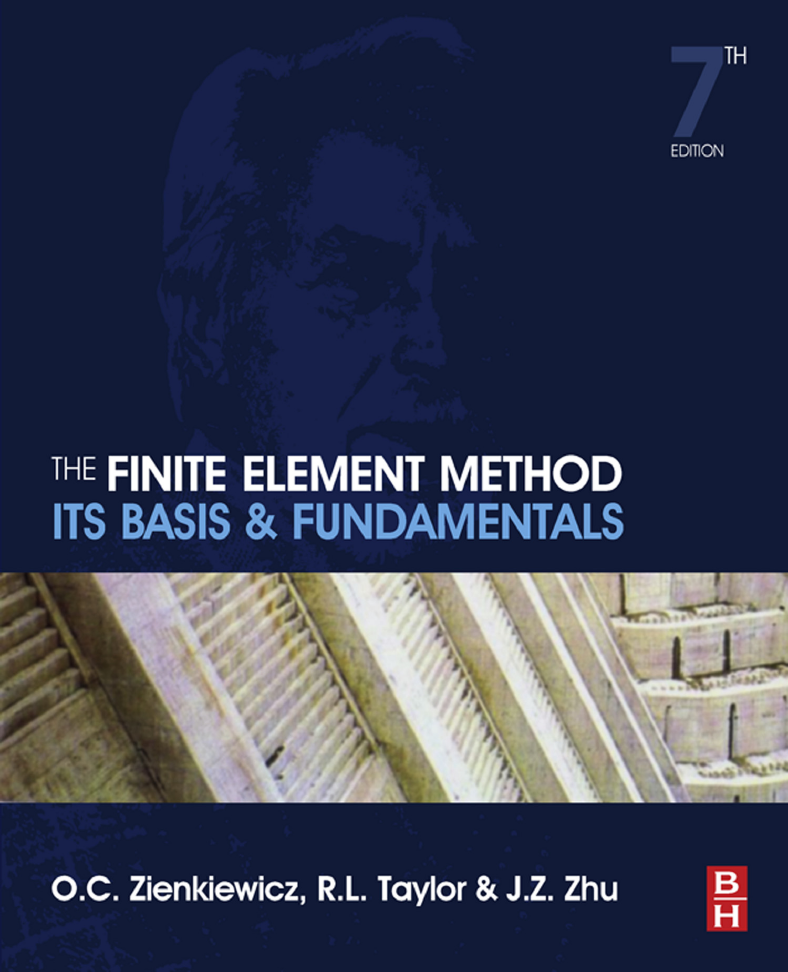
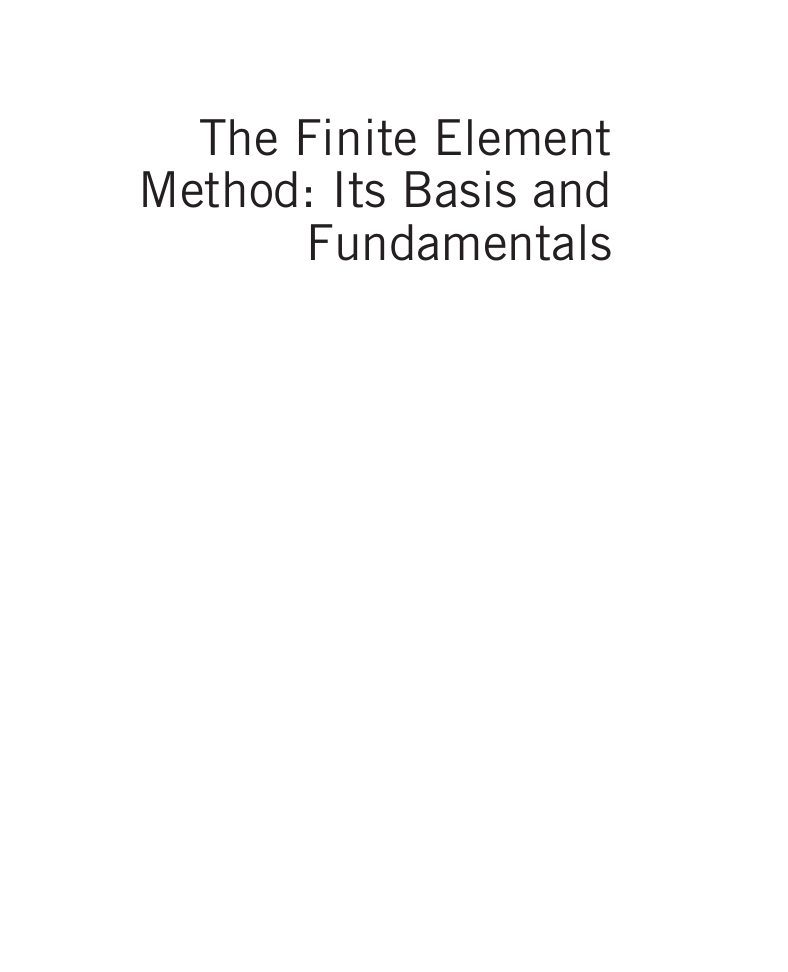
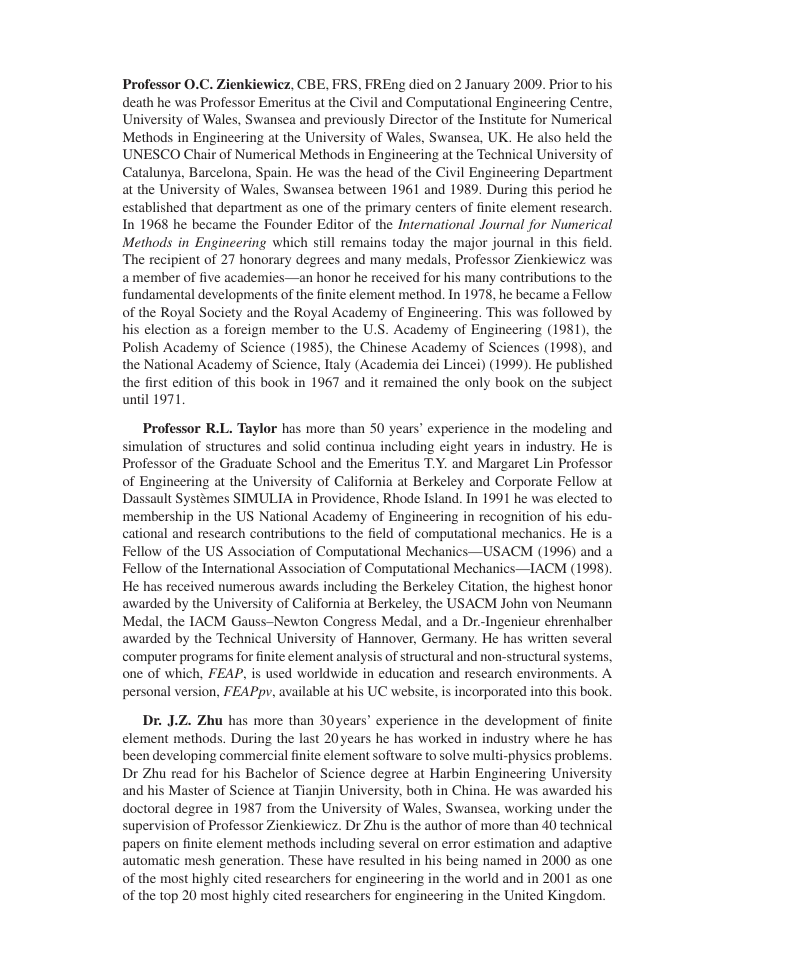
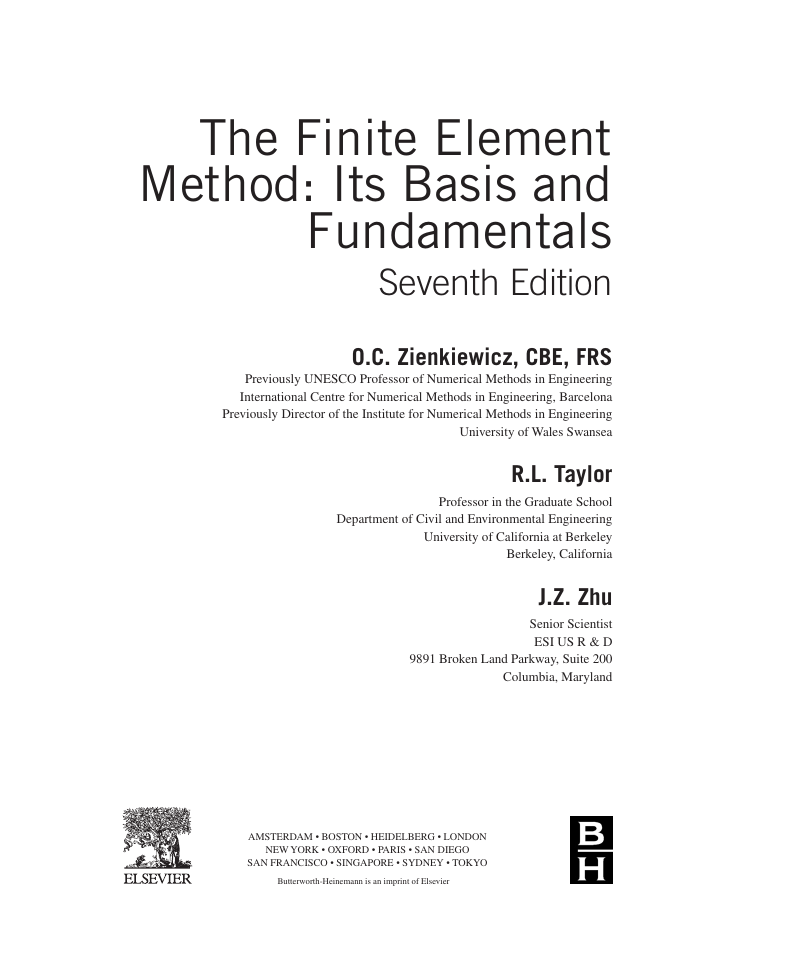
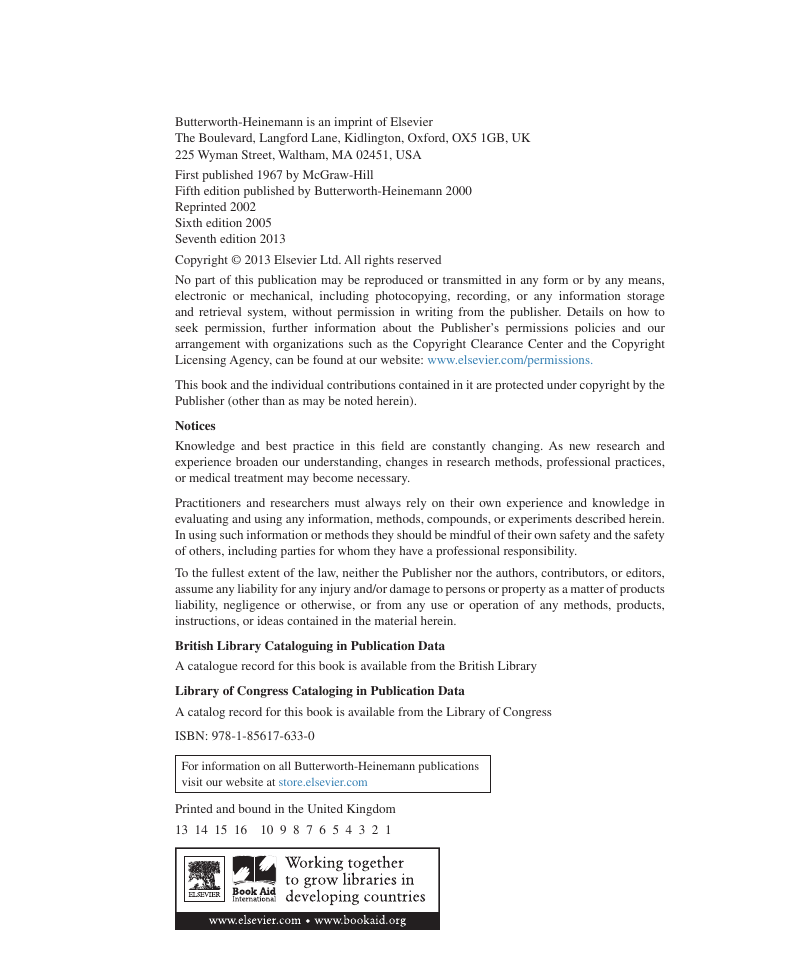


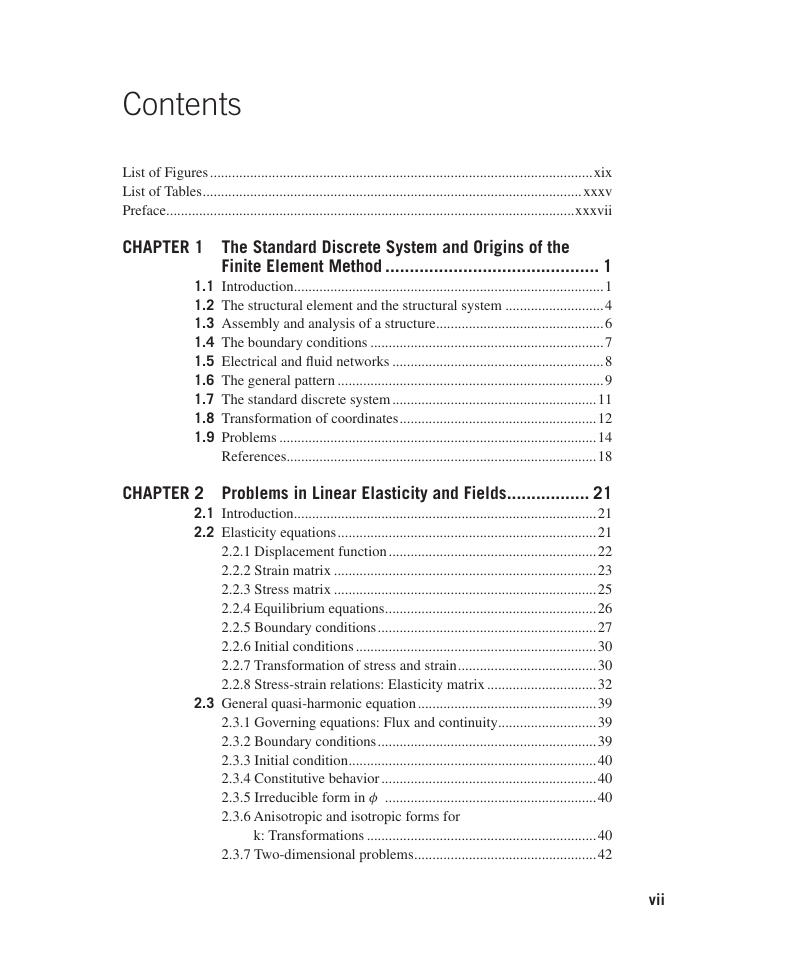








 2023年江西萍乡中考道德与法治真题及答案.doc
2023年江西萍乡中考道德与法治真题及答案.doc 2012年重庆南川中考生物真题及答案.doc
2012年重庆南川中考生物真题及答案.doc 2013年江西师范大学地理学综合及文艺理论基础考研真题.doc
2013年江西师范大学地理学综合及文艺理论基础考研真题.doc 2020年四川甘孜小升初语文真题及答案I卷.doc
2020年四川甘孜小升初语文真题及答案I卷.doc 2020年注册岩土工程师专业基础考试真题及答案.doc
2020年注册岩土工程师专业基础考试真题及答案.doc 2023-2024学年福建省厦门市九年级上学期数学月考试题及答案.doc
2023-2024学年福建省厦门市九年级上学期数学月考试题及答案.doc 2021-2022学年辽宁省沈阳市大东区九年级上学期语文期末试题及答案.doc
2021-2022学年辽宁省沈阳市大东区九年级上学期语文期末试题及答案.doc 2022-2023学年北京东城区初三第一学期物理期末试卷及答案.doc
2022-2023学年北京东城区初三第一学期物理期末试卷及答案.doc 2018上半年江西教师资格初中地理学科知识与教学能力真题及答案.doc
2018上半年江西教师资格初中地理学科知识与教学能力真题及答案.doc 2012年河北国家公务员申论考试真题及答案-省级.doc
2012年河北国家公务员申论考试真题及答案-省级.doc 2020-2021学年江苏省扬州市江都区邵樊片九年级上学期数学第一次质量检测试题及答案.doc
2020-2021学年江苏省扬州市江都区邵樊片九年级上学期数学第一次质量检测试题及答案.doc 2022下半年黑龙江教师资格证中学综合素质真题及答案.doc
2022下半年黑龙江教师资格证中学综合素质真题及答案.doc